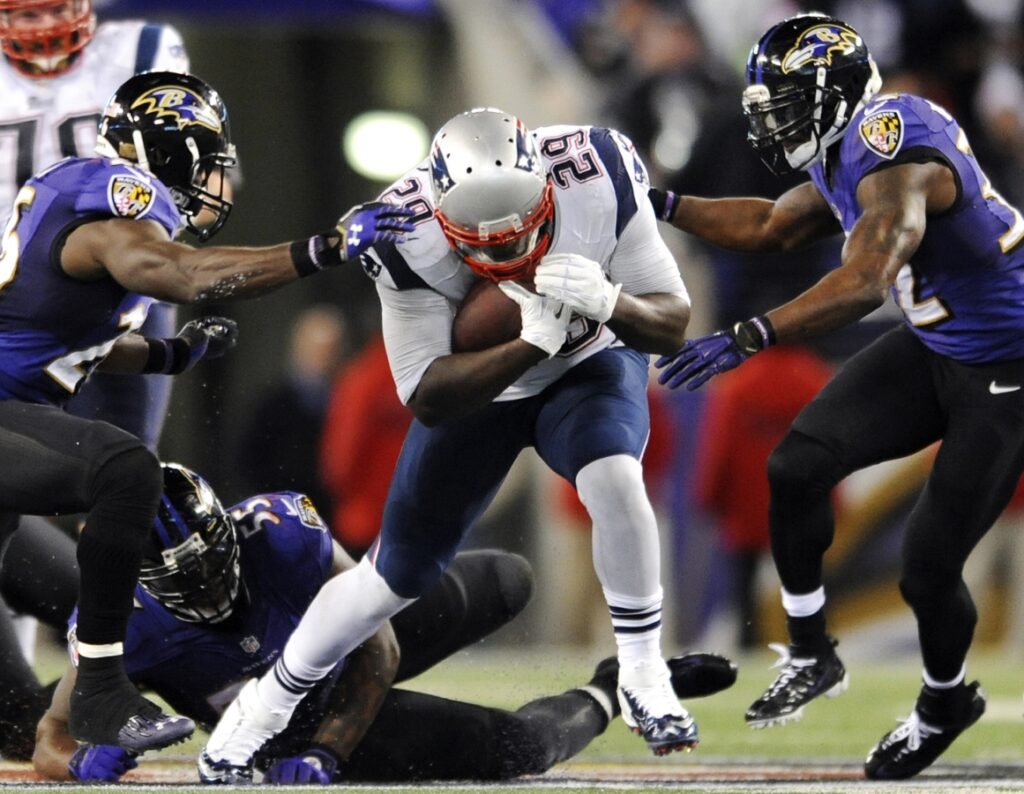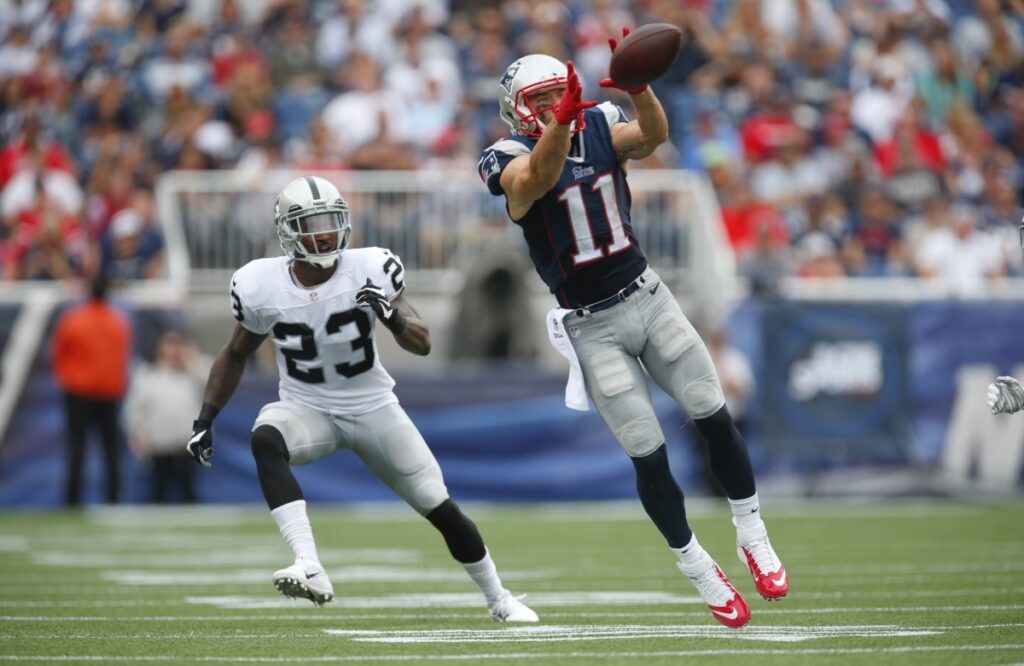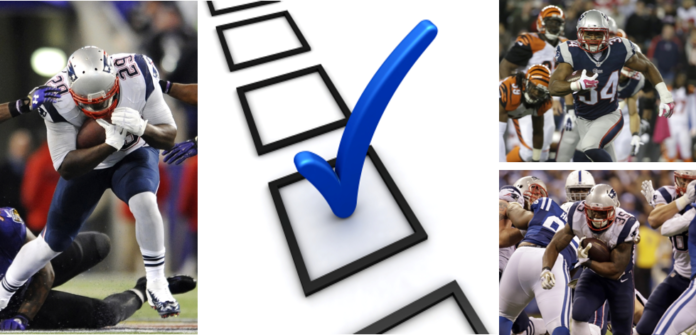3 Goals New England Needs to Meet to Advance Past Baltimore
In football, there are no strict, unbreakable rules. While there are critical indicators to pay attention to, the game is filled with variables, outliers, and rule-breakers.
Having sat through numerous game plan briefings during my NFL experience and observed some of the game’s most remarkable minds look through the details to identify what’s most critical, here’s my attempt at creating a realistic checklist of what the Patriots will need to do to secure a victory.
Drawing from my extensive experience in the NFL, where I’ve had the privilege to partake in numerous game plan briefings and observe some of the sport’s finest minds meticulously deciphering the essentials, I shall endeavor to craft a fresh, lifelike checklist outlining the prerequisites for the Patriots to secure victory.
As I approach this task from the perspective of the New England Patriots, any failure to satisfy this checklist in its entirety would serve as a compelling indication of a triumph for the Ravens in Foxboro.
Conversely, if the Patriots successfully adhere to this checklist, the odds of their victory surge significantly. The essence of a streamlined goal list lies in its universality – the lists for each respective team should bear striking similarities.
The areas of uncertainty should primarily revolve around the strategies each employs to accomplish these objectives.
ITEM #1: CREATE SPACE. RUN THROUGH IT.
It’s not without reason that this item occupies the top slot; it isn’t just the first but undeniably the most pivotal, for it exerts a profound influence on the realization of all other checklist items.
The Baltimore Ravens boast one of the most formidable front sevens in the NFL.
On the flip side, their secondary has endured a season marked by injuries, presenting a conspicuous vulnerability. To their credit, they’ve adeptly managed this predicament down the stretch.
In today’s era of offensive football, facing a formidable front seven doesn’t necessarily mandate confronting it head-on.
If your objective is to deter your adversary from deploying their optimal personnel groups, simply pivot towards an offensive formation that compels them to adapt. The presence of versatile assets like Rob Gronkowski makes such a decision considerably more straightforward.
The attributes that shine in conventional defensive play don’t always seamlessly transition to sub-packages like the nickel or dime defense, where linebackers make way for defensive backs.
The introduction of additional space doesn’t favor everyone; it’s akin to a skilled pugilist preferring a spacious arena over a cramped elevator.
When dealing with a team like Baltimore, renowned for its physicality, the wisest strategy entails enticing the game to a wider expanse and then unleashing unbridled physicality.
Defeating a team like Baltimore doesn’t require an impossible task of outmuscling them. It’s more about strategically engaging them in a situation where their strengths are less effective.

For the Patriots, the paramount concern is to avoid futilely charging into the Ravens’ strengths and engaging in power-based running plays in tight, congested areas where formidable figures like DT Haloti Ngata or Terrell Suggs lurk at the forefront of the defense.
This does not imply a complete abandonment of the running game, quite the contrary. It’s all about engineering space through strategic formations and then exploiting the vulnerabilities of the defenders in the less-crowded regions.
The Patriots stand as one of the rare NFL teams that feel entirely at home, like a cucumber in a jar of vinegar, operating predominantly with sub-offensive personnel groupings.
As frequently noted throughout the year in FBF, these sub-offensive groupings aren’t synonymous with a heightened emphasis on passing; rather, they offer more room for maneuvering with smaller, swifter players who leverage the field’s width to their advantage.
In contests of this nature, New England may opt not to utilize their fullback, James Devlin, as extensively. However, this doesn’t necessitate an exclusive reliance on draws and similar plays often associated with the sub-running game.
To put it differently, just because the personnel on the field suggests a passing formation doesn’t mandate a purely “Vereen” style of running. It’s entirely plausible to maintain a power-oriented mindset while presenting a passing facade.
The strategy here revolves around widening the Ravens’ defense and thinning the defensive box from seven to six through strategic formations and personnel choices, respectively.
Following this adjustment, subjecting them to a relentless barrage of LeGarrette Blount (or Jonas Gray) rushes, complemented by well-executed play-action passes, is the objective.
The outcome is poised to include surefire tackles, additional yards gained after contact, and a reduced occurrence of negative plays.
Sub packages should not be misconstrued as an indication of a pass-centric approach with afterthought running plays.
On the contrary, they serve as the linchpin to establish a punishing running game advantage against the Ravens, a tactic of utmost importance as it effectively dampens their formidable pass rush…
ITEM #2: WIN 1ST DOWN
In the realm of the Patriots’ offense in 2014, downfield incompletions on 1st down from dropback passing have posed a vexing challenge.
Few things are as exasperating for a keen observer of this team as witnessing Tom Brady’s downfield pass fall incomplete on 1st down, followed by two more pass plays that fail to convert.
This is one of those checklist items that hold substantial bearing on the fortunes of both teams. In their wild-card win, the Ravens compelled the Steelers into twelve 2nd & 10 (or longer) situations.
It’s worth noting that Pittsburgh, lacking Le’Veon Bell and a proficient running game, struggled mightily on 1st down.
Their inadequacy was evident in their inability to achieve positive ground gains early on and in their failure to orchestrate short passing plays that moved the chains.
This neatly ties back to item #1, as many of these pivotal 1st down conversions will ideally stem from running plays, particularly space-oriented runs from sub-formations.
However, overtly favoring a run or pass tendency on 1st down is an invitation for the Ravens to congest the line of scrimmage, rendering running nearly impossible.
This is where the quick-passing game comes into play. Gaining three yards through short passes on 1st down constitutes success, as it keeps the Patriots on track and disrupts the Ravens’ rhythm.

Common sense dictates that incompletions on safer, shorter throws carry a lower risk. The overarching aim is to steer clear of the dreaded 2nd & 10 scenario.
While a couple of downfield incompletions on 1st down can help maintain unpredictability and disrupt tendencies, an excessive number of them spells trouble for the Patriots, akin to juggling fireballs in a pool of gasoline.
Positive plays on the initial down serve as investments in future scoring opportunities. Can the Patriots mount a comeback in a series?
Undoubtedly, they are one of the NFL’s most proficient teams at doing so when everything aligns. However, this approach handicaps them against an opponent skilled at thwarting such rallies.
Should the Patriots spend the day consistently facing a deficit in the down-and-distance, it’s plausible that they’ll find themselves trailing on the scoreboard as well. Staying ahead in the down-and-distance battle transforms the Ravens into mere roadkill.
ITEM #3: DON’T LOSE T/O DIFFERENTIAL
This last item is inherently intertwined with the preceding two. When space is both created and exploited on schedule, the associated risks that lead to turnovers are substantially mitigated.
In simpler terms, when it’s not 2nd & 10, there’s no rationale for enduring extended, vulnerable 5- and 7-step dropbacks that expose the quarterback to strip-sacks.
If you’re navigating the open areas and challenging catch-tackling defensive backs, your play-action passing game can provide Tom Brady with the luxury of a pocket as comfortable as a lawn chair. It’s all interconnected.
Concerned about the Patriots’ offensive line’s ability to contend with Baltimore’s skilled four-man pass rush?
Ensure that every time these linemen set up, their counterparts across the line are grappling with genuine uncertainty.
Failing to do so significantly elevates the Ravens’ prospects of generating game-altering turnovers on defense.
Safeguarding the football is paramount for the Patriots. The most effective way to achieve this is by successfully executing #1 and #2 and subsequently dismantling a defense on its heels.
This isn’t merely a historical benchmark for the Patriots; it’s an opportunity indicator for the Ravens and their customary path to victory.
The graphic below illustrates each of the last four Ravens games at Gillette Stadium (in blue), as well as their most recent seven games of the season (following their bye week).
History shows that the Ravens have a strong tendency to win when they maintain parity or an advantage in the turnover differential.
The sole historical exception was the 2011 AFC Championship game, a contest riddled with improbable twists and turns that enabled the Patriots to overcome a 2-turnover deficit—an occurrence unlikely to favor a team playing with fire.

The brilliance of the Turnover (T/O) differential metric lies in its holistic nature, measuring the entire team’s performance rather than singling out offense or defense.
The Patriots’ formidable defense can enhance their chances of forcing turnovers by coaxing Joe Flacco into making those 4-5 highly questionable throws per game that have long been his penchant.
When the Ravens find themselves ahead in the turnover battle, that number typically dwindles to 1-2, as the imperative to take risks diminishes.
The Patriots’ defense is poised to capitalize on turnovers primarily when the Ravens’ defense is thrown off-kilter, and the Baltimore offense faces the pressure of matching their opponent’s pace.
The Patriots’ defensive unit seldom engages in unwarranted risks, consistently eschewing the allure of the “big play.” With the abundance of talent at their disposal on both sides of the ball, there’s simply no necessity to expose themselves recklessly.
For the Patriots at home, it’s not so much about winning the turnover differential as it is about avoiding losing it.
The surefire way to breathe life into the Ravens’ prospects is by gifting them additional opportunities.
Just like any well-crafted game plan checklist, if the Patriots judiciously adhere to #1 and #2, #3 will naturally follow suit, paving the way for them to clinch the victory.
In Foxboro, there’s no room for charity; it translates into a long, arduous journey back home for the Ravens to Maryland.

